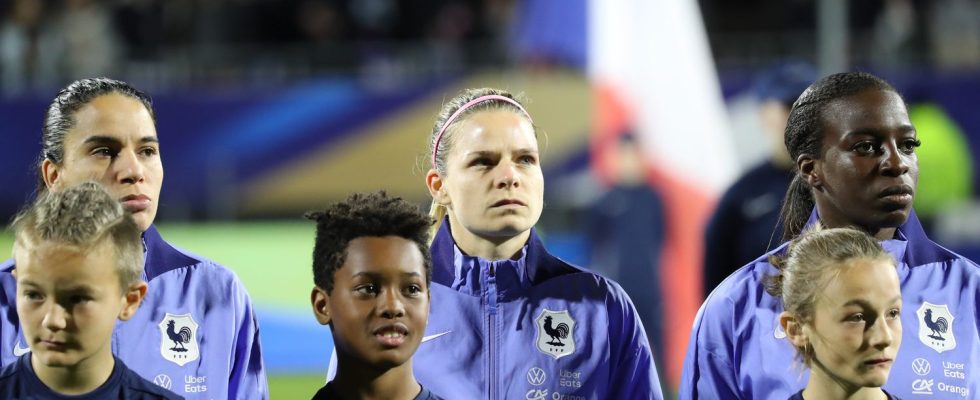In a football practiced by women in full swing, Brazil, Italy, Argentina are not among the major nations, unlike the United States and Sweden.
The American defending champions started the Football World Cup on Saturday July 22 with a clear success against Vietnam (3-0). Transposed to the masculine, this sentence would be fiction. When Team USA has been the juggernaut of women’s football since the first edition of the World Cup in 1991, the men’s selection is evolving at a rather quiet pace at the world level. The United States example is the almost perfect illustration of the hierarchy in football practiced by women, and its very approximate parallel with that of the opposite sex.
If the United States women’s team has won four of the eight World Cups played in history, including the last two editions in 2015 and 2019, for men, it has not reached the quarter-finals since 2002, for only one presence in the last four at the inaugural World Cup in 1930.
The example of Brazil, sporting or sexist reference
A real big gap, almost as revealing, is observable when we throw a eye on the most successful nation in men’s football: Brazil. Crowned with its five stars on its jersey, the Seleção is still fanny among women. When the Carioca country had Pelé as a true idol of the people between the 50s and 70s, women were outlaws if they ever thought of treading on a lawn.
Legislative decree 3199, applied between 1941 and 1979, qualified certain disciplines such as football, rugby or weightlifting as “incompatible with feminine nature“. This provision marked Brazilian society and it took many years after its repeal for the professionalization of football to be well seen. And this, despite the rare popularity of this sport, and already existing infrastructures.
More broadly, almost all of South America constitutes a paradox, where football is frequently the equal of a religion. If Lionel Messi’s Argentina won the title in Qatar last December, the women’s Albiceleste have never won a World Cup match, earning their first points with two draws at the 2019 World Cup after having accumulated six defeats in their two other appearances in 2003 and 2007. Uruguay, their two World Cups and their 14 appearances for men, are still waiting to see their women play their first match at the World Cup.
The phenomenon is not limited to South America. Italy and its four men’s titles is only a modest women’s selection, absent from the World Cup between 1999 and 2019. The Netherlands and Spain are still emerging women’s selections, with only two participations in the last two editions.
The Scandinavian precursors
Conversely, the Scandinavian women’s nations are world references in football. Sweden, 23rd in the men’s FIFA rankings, is on the podium of the women’s chessboard. The country was a forerunner by establishing a government program of “sport for all”, giving pride of place to equality in 1969, and therefore to football played by women. In 1980, there was approximately one female licensee for every five men practicing football. Fifteen years later, there were more licensees in a football club than in France, in a country yet 6.5 times less populated.
At the highest level, this sports culture anchored early and the investments made – as well as the delay of other countries – have propelled Sweden or Norway among the top of the female plateau. Like the United States therefore, Canada (7th nation among women in the Fifa ranking, 45th among men), China (14th among women, 79th among men) or Japan, crowned in 2011 among women, but which has never passed the round of 16 among men.
The major football countries of all genres are almost an exception. Germany, the second most successful nation for both men and women, or France are among them. It remains for Hervé Renard’s Bleues to follow the path traced by the bands of Aimé Jacquet and Didier Deschamps, and climb to the top for the first time.
